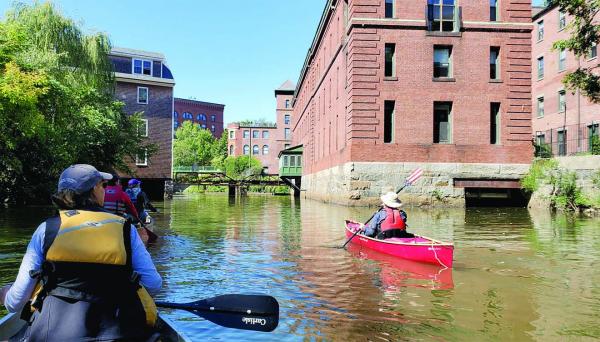July 8, 2021

Governor Baker is backing an effort to get the US Environmental Protection Agency (EPA) to have a badly polluted section of the Neponset River between Hyde Park and Dorchester added to the federal agency’s National Priority List, an action that would make it eligible for so-called “Superfund” status.
Advocates for the river are cheering Baker’s move as the latest key step in a long process to get contaminants that have built up in the river over centuries removed.
Sediment in the Lower Neponset — a 3.4-mile section— contains elevated levels of polychlorinated biphenyls (PCBs), which are hazardous to human health, fish life, and the environment. The PCBs are a grim reminder of the Neponset’s polluted past, when factories along its shore used the river as a place to dump their chemical waste.
“The serious nature of contamination in the Lower Neponset River warrants its inclusion on the National Priorities List,” Baker said in a letter sent to the EPA last week. “We look forward to continuing to work closely with our federal and local partners on the coordinated effort to clean up this site in order to protect the environment and public health.”
The governor’s letter follows years of work between the Massachusetts Department of Environmental Protection (MassDEP) and EPA on assessing the river’s deterioration and considering the steps needed for listing the site and cleaning it up.
“It’s an important milestone to get this considered as a national priority,” Mass DEP Commissioner Martin Suuberg told the Reporter last week. “It allows the EPA to determine the appropriateness of this listing to move to the next step.”
Suuberg said that he expects the project will be approved and that the funding will be used to remove contamination, particularly behind the Baker Dam in Lower Mills and two similar sites in Mattapan and Hyde Park.
The dams themselves, he said, will remain in place.
Leaders from advocacy groups that have played a key role in raising awareness about PCBs and calling for the designation are calling Baker’s letter “fantastic news.”
“These legacy pollutants are an obstacle to advancing community-supported habitat restoration in the Lower Neponset,” said Kerry Snyder, advocacy director with the Neponset River Watershed Association, adding that the cleanup is important “not only for the ecological health of the river, but also for making our communities more resilient to the impacts of climate change.”
Said Ian Cooke, executive director of the Watershed group: “Without federal resources, properly removing the public health risks posed by the PCBs would be virtually impossible. We’re looking forward to working closely with MassDEP, EPA, and our neighbors in Boston and Milton to make sure this process efficiently and transparently advances.”
Added Energy and Environmental Affairs Secretary Kathleen Theoharides: “Leveraging the resources of the federal government will ensure action to clean up long-standing contamination and further restore the Lower Neponset River as a recreational and environmental asset flowing through Environmental Justice communities,”
Following the receipt of Baker’s letter, the EPA is expected to formally propose the site for NPL listing and solicit public comment in the Federal Register. The 60-day comment period would then begin later this year. EPA will review the comments and make its decision.
When a site is given Superfund status, the EPA begins a comprehensive probe to identify parties responsible for the pollution and then set up initial clean-up efforts. The priority classification — and any federal funding that might come with it — is contingent on determining responsibility for the pollution, a legal process that involves researching past practices and assigning culpability.



